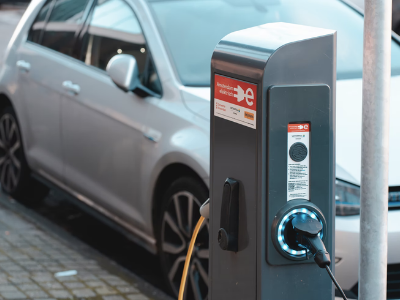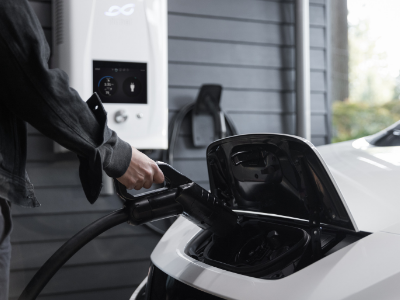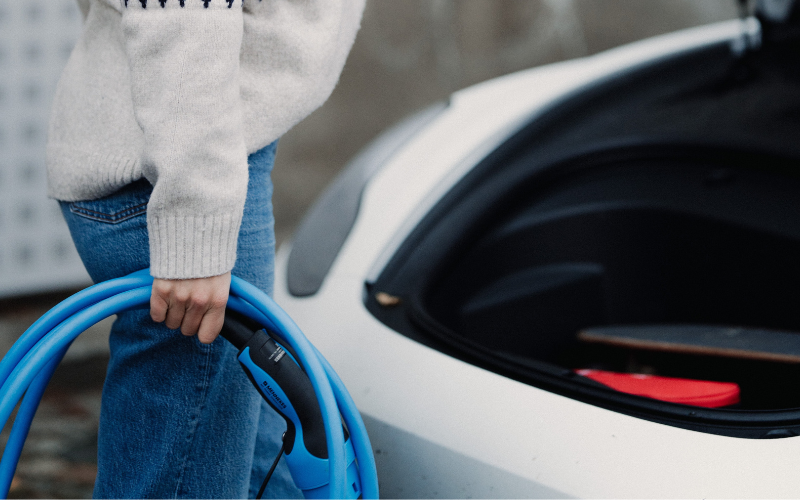Hoe kies ik eenvoudig de goedkoopste laadpas?
Wie zijn elektrische auto wil opladen, kan niet zonder de laadpas. Er zijn echter tientallen aanbieders, elk met eigen tarieven en voorwaarden. Hoe kies je nu de goedkoopste en de beste laadpas?
Een elektrische auto opladen is heel eenvoudig. Laadpalen staan in Nederland op elke straathoek, dat is het probleem niet. Wat wel lastig is: erachter komen wat je betaalt voor je stroom. Dat komt door de omslachtige manier waarop je voor de geladen elektriciteit betaalt: met een laadpas. Vaak zitten er achter de laadpaal en de laadpas twee verschillende bedrijven, die elk hun eigen tarieven bepalen.
Allereerst is er het bedrijf achter de laadpaal, ook wel de CPO (Charge Point Operator) genoemd. Je krijgt echter een factuur voor je geladen stroom van het bedrijf waar je een laadpas-abonnement hebt, ook wel de MSP (Mobility Service Provider) genoemd. Wat je per laadsessie betaalt, is niet alleen afhankelijk van de laadpaal, maar dus ook van de laadpas. Het is heel goed mogelijk dat je bij één en dezelfde laadpaal met laadpas A aanzienlijk meer betaalt dan met laadpas B. Wie niet te veel wil betalen voor zijn stroom moet dus even onderzoek doen en mogelijk zelfs meerdere passen aanvragen.
In de basis zijn er twee manieren waarop het laadtarief tot stand komt:
1. CPO-tarief + opslag
Bij deze rekenmethode vormt het tarief van de laadpaal (ofwel het CPO-tarief) de basis. Stel dat een laadpaal-aanbieder een tarief hanteert van 35 cent per kWh, dan is dat ook wat jij per kWh betaalt. Omdat het bedrijf waar jij je laadpas-abonnement hebt afgesloten ook kosten heeft en winst wil maken, betaal je vaak een opslag. Soms is dit een starttarief, maar het kan ook een percentage of vast bedrag bovenop het CPO-tarief zijn. Er zijn ook laadpassen met een betaald abonnement. In ruil voor een vast bedrag per maand betaal je dan minder of geen opslag per laadsessie.
- Je profiteert van lage CPO-tarieven…
- …maar betaalt ook meer bij hoge CPO-tarieven
- Je weet vooraf niet hoeveel je betaalt per kWh
2. Vast MSP-tarief
Er zijn ook laadpassen waarvan het bedrijf erachter vaste tarieven hanteert per kilowattuur, bijvoorbeeld 36 cent per kWh. Je betaalt bij iedere laadpaal hetzelfde tarief, ongeacht of het CPO-tarief van de laadpaal 30 of juist 45 cent per kWh is. Soms rekent de laadpasaanbieder ook nog een starttarief of een vast bedrag aan abonnementskosten per maand.
- Je weet waar je aan toe bent met vaste tarieven
- Mogelijk duurder dan CPO-tarief
Maar welke moet ik nu kiezen?
Welke laadpas voor jou het goedkoopste is, kun je eenvoudig zelf uitzoeken. Allereerst is het handig om in kaart te brengen welke laadpalen je veel verwacht te gebruiken, bijvoorbeeld de openbare laadpalen bij jou in de straat. Via een website als oplaadpalen.nl kun je op een kaart zien welke laadpalen er bij jou in de buurt staan. Voor veel palen kun je ook het CPO-tarief per kWh zien door op het pinpas-symbooltje te klikken. Soms moet je even zoeken op de website van de CPO. Bij de meeste palen ligt het CPO-tarief tussen de 34 en 39 cent per kWh, maar er zijn ook uitzonderingen. Zo kun je in Rotterdam op veel plekken palen vinden van Engie waar je 31 cent per kWh betaalt, maar een straat verderop kan zomaar een paal van Eneco staan waar je juist 40 cent per kWh kwijt bent.
Kun je laden bij een paal waar het CPO-tarief lager is dan het MSP-tarief van de meeste laadpasaanbieders, dan is een laadpas die dat CPO-tarief doorberekent het handigste. Bij een paal met een relatief hoog CPO-tarief is het juist handiger om een pas te gebruiken die een lager MSP-tarief per kWh rekent. Voor iemand in Rotterdam is het handig om beide passen te hebben. Wanneer het kan goedkoop laden aan de paal waar de stroom 31 cent per kWh is, maar een andere pas voor wanneer die laadpaal bezet is en je moet uitwijken naar een paal waar het tarief 40 cent is.
Kijk niet alleen naar de laadpalen vlakbij huis, maar ook op andere plekken waar je vaak komt. Denk aan je werk, familie of vrienden die je regelmatig bezoekt of de sportclub. Het kan je niet alleen helpen om de juiste pas(sen) te kiezen, soms ontdek je ook dat je één straat verderop aanzienlijk goedkoper kunt laden.
Lees ook: Wat kost het opladen van een elektrische auto?
Gratis pas of abonnement?
Veel aanbieders van laadpassen bieden je twee opties: een gratis pas, zonder maandelijkse kosten en een pas waarvoor je een vast bedrag per maand betaalt. Bij die gratis pas betaal je vaak een wat hoger tarief per kWh of een extra starttarief per laadsessie. Er is dan een kantelpunt waarbij het goedkoper is om een laadpas met abonnement te hebben. Reken voor jezelf uit of je verwacht meer te laden dan dat kantelpunt, zoals in onderstaand voorbeeld.
Een voorbeeld:
Bij de gratis laadpas betaal je 37 cent per kWh en 50 cent startkosten per laadsessie. De laadpas met abonnement van 5,- euro per maand heeft eveneens een tarief van 37 cent per kWh, maar geen startkosten. Het kantelpunt ligt dan bij tien laadsessies (5 / 0,50 = 10). Je bent dus goedkoper uit met de pas met abonnement wanneer je meer dan tien keer per maand laadt.
Snelladen
Snelladen is duurder dan laden thuis of aan een openbare laadpaal thuis. Veel grote aanbieders van snelladers hebben ook hun eigen passen, waarmee je goedkoper kunt snelladen. Zo kun je met de gratis Shell Recharge-laadpas (of app) bij meer dan 180 snelladers laden voor 59 cent per kWh. Bij FastNed, de grootste aanbieders van snelladers, betaal je normaal 69 cent per kWh, maar kun je met een pas à 11,99 euro per maand laden voor 45 cent per kWh. Daarmee ben je goedkoper uit als je per maand meer dan 50 kWh laadt (ongeveer een tot anderhalve volle accu voor een gemiddelde elektrische personenauto).
Combineren is besparen
Wie nooit te veel wil betalen voor zijn elektriciteit heeft meerdere laadpassen in zijn portemonnee zitten en checkt vooraf welke pas hij moet gebruiken bij een laadpaal. Om het een beetje leuk te houden, zouden wij twee passen kiezen. Één pas, al dan niet met betaald abonnement, als basis. Dit is de pas waarmee je thuis of op het werk het goedkoopste kunt laden en die je het meeste zal gebruiken. Daarnaast nog een gratis pas waarmee je goedkoper kunt laden bij enkele duurdere palen die je soms verwacht te gebruiken of waarmee je iets goedkoper kunt snelladen. Als je veel snellaadt, kun je eventueel nog kiezen voor een losse pas speciaal voor dit doel.
Handige laadpassen
|
|
Tarief |
Snelladen |
Starttarief |
Kosten per maand |
Aanvragen pas |
|
CPO-tarief zonder opslag |
|
Nee |
€3,50 (€1,50 wanneer je al klant bent) |
Gratis |
|
|
€0,35/kWh
|
€0,69/kWh
|
€0,242/sessie
|
€ 10,77 per maand
|
Gratis
|
|
|
€0,295/kWh
|
€0,545/kWh
|
Nee |
€3,50
|
€5,- |
Wat anderen ook lezen
-
De beste

Dit zijn de beste elektrische auto's van dit moment
-
Blog

Wat kost het opladen van een EV?
-
De beste

Elektrische auto met grote actieradius gezocht? Dit zijn de beste
-
Blog

Hoe lang gaat de accu van een elektrische auto mee?
-
De beste

Ruim én elektrisch? Dit zijn de beste elektrische SUV's
-
Blog

Esther stapte over op elektrisch rijden: "Best spannend!"
-
Blog

20 feiten & fabels over elektrisch rijden
-
Blog

Goedkoop elektrisch rijden doe je zo


